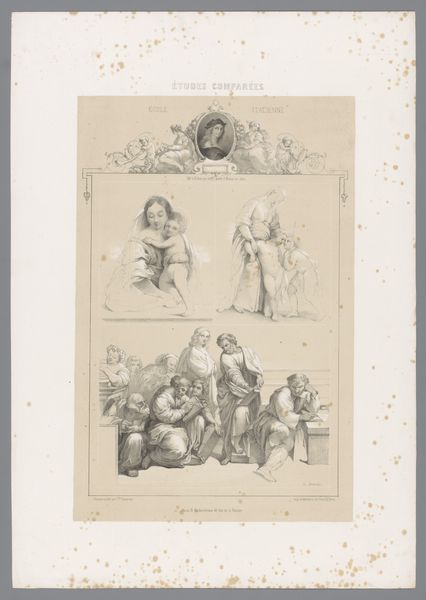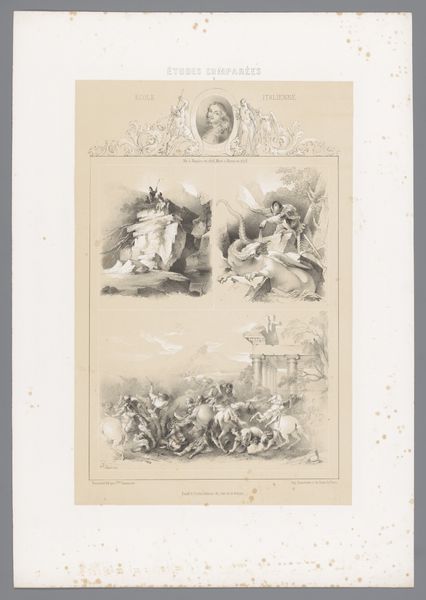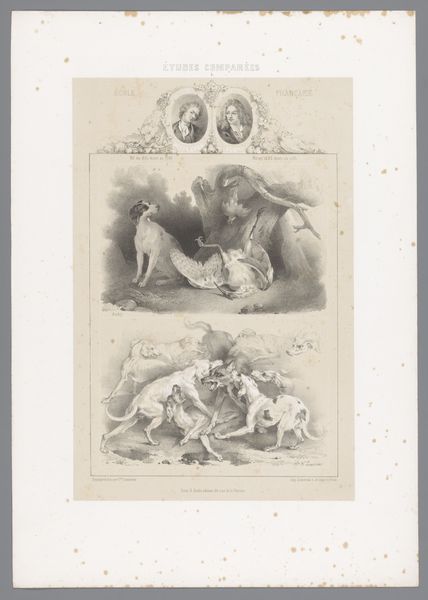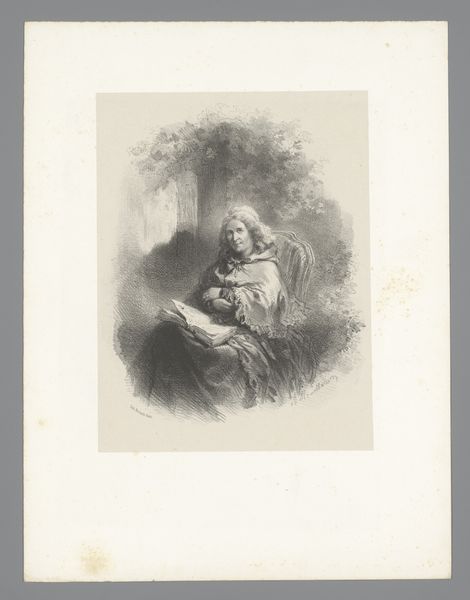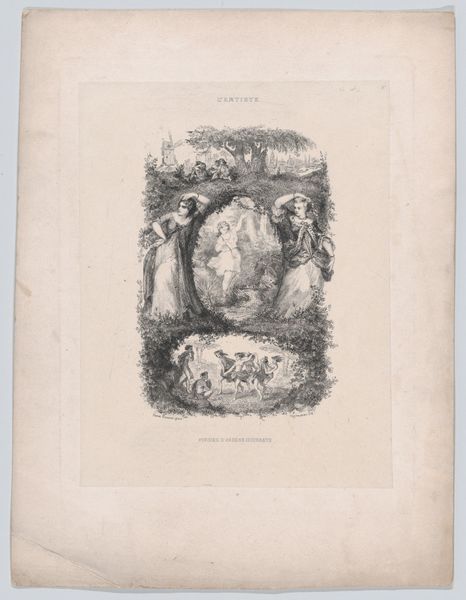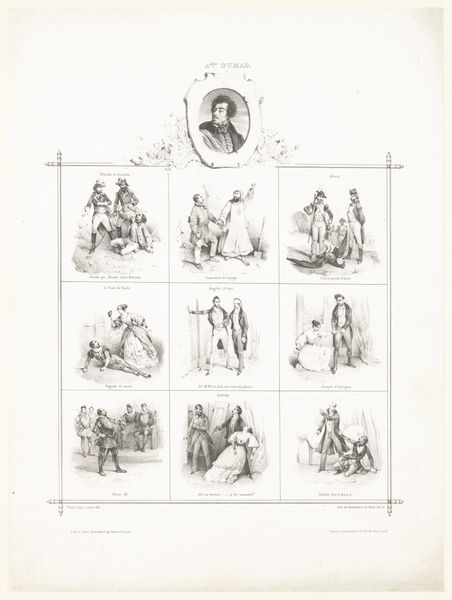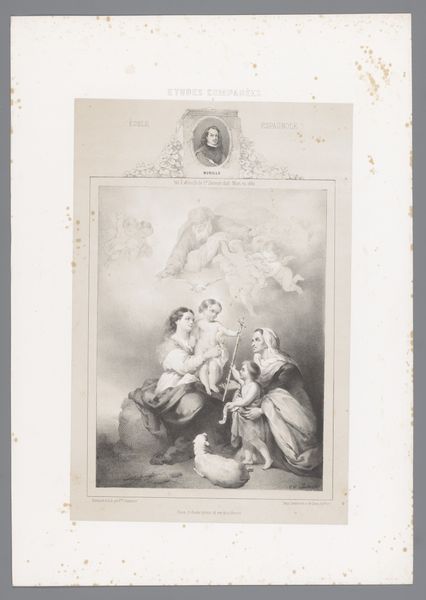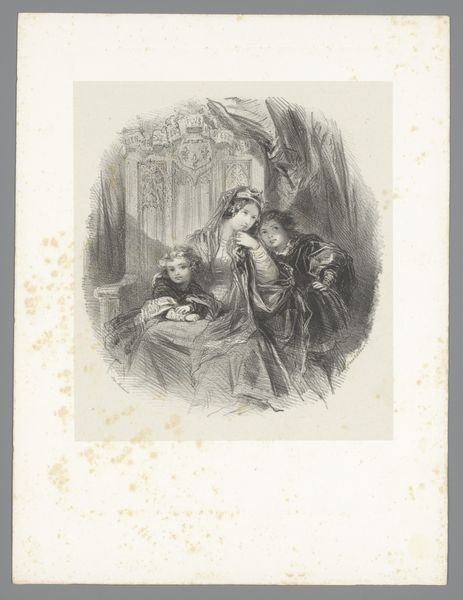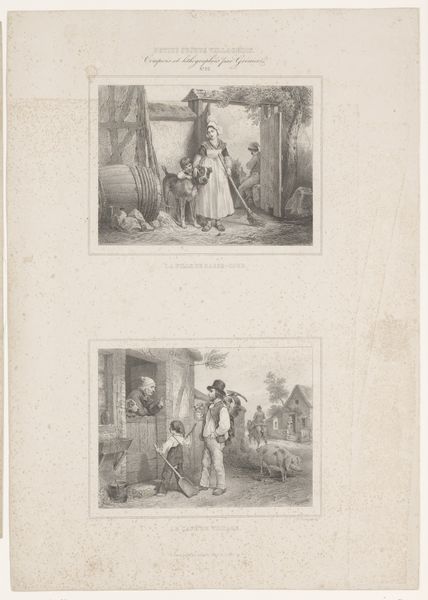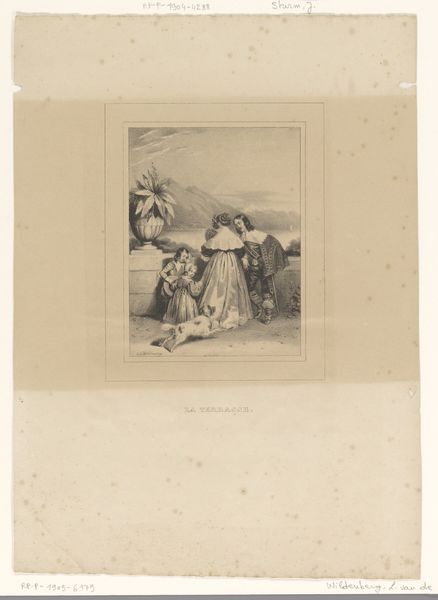
drawing, print, paper, ink, engraving
#
portrait
#
drawing
#
narrative-art
# print
#
figuration
#
paper
#
ink
#
coloured pencil
#
romanticism
#
history-painting
#
academic-art
#
engraving
Dimensions: height 448 mm, width 315 mm
Copyright: Rijks Museum: Open Domain
Editor: So, this is "Studies naar schilderkunst van José de Ribera" by Charles Nicolas Lemercier, made in 1850. It seems to be a print or engraving. It’s very detailed. There's a lot going on with the different scenes depicted, and I'm drawn to the contrasts in light and shadow. How would you interpret this piece? Curator: What I see is a study of production, really. Consider the layered process: Lemercier interpreting Ribera, creating an engraving, then the further reproduction of the print itself. This layered process moves away from the aura of the unique "artwork" towards reproducible media. The labor is materialized across each stage, challenging a hierarchy of original versus copy, artistic genius versus artisan work. What's striking is how the print medium flattens the rich chiaroscuro of Ribera's painting – it exposes the underlying structural elements that can be copied and consumed. Editor: That's fascinating. I was focused on the visual elements, the artistic intention, but you’re talking about the production, the labour and social context that shaped the materials! Curator: Exactly. Think about who had access to this print, how it might have circulated. Was it for academic study, artistic inspiration, or mere consumption? Editor: So the point isn't just WHAT is depicted, but HOW it was made and who got to see it. I never considered prints as a form of mass production before! Curator: Precisely. It's about democratizing images, but also about the new economic realities that emerge from this reproduction. So, would you say that changed your perspective? Editor: Definitely. It's more than just art; it’s about industry and consumption too. Thanks, that gave me a whole new angle to think about art history! Curator: Glad to have expanded your framework of analysis with materiality, process, and social reach!
Comments
No comments
Be the first to comment and join the conversation on the ultimate creative platform.
